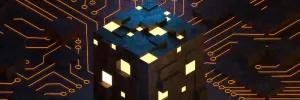Working professionals
Fresh graduates
- Study abroad
- Offline centres
More
Free Technology Courses Online with Certificates (2025)
Level up your tech career with upGrad free online tech courses. Master software development, data structures, and emerging technologies like blockchain and cryptocurrency through hands-on learning.
Master Key Technologies: Dive deep into blockchain, machine learning, and cloud computing to enhance your tech expertise.
Enhance Your Coding and Algorithm Expertise: Strengthen your problem-solving skills with data structures and algorithms through hands-on exercises.
Stay Updated with the Latest Trends in Tech: Explore emerging technologies and frameworks to keep your skills aligned with industry advancements.

Free Online Tech Courses
Trending Tech Free Courses
Free Technology Courses
Level Up with Free Tech Courses

20k+ learners
2 hrs of learning

6k+ learners
2 hrs of learning

6k+ learners
5 hrs of learning


27k+ learners
1 hrs of learning

5k+ learners
8 hrs of learning
Benefits of upGrad Free Technology Certification Courses
Key Features of upGrad Free Technology Courses Online with Certificates
Key Tech Skills You Will Learn in upGrad Free Technology Courses
Who Should Enroll in upGrad Free Technology Courses?
What Makes These Tech Courses Different from Other Courses?
Recommended Technology Courses For You
Frequently Asked Questions on Free Tech Courses Online with Certificates
1. Are these tech courses completely free of cost?
Yes! All our free tech courses are entirely free - there are no hidden fees, subscriptions, or charges for certification. It's a learning opportunity designed to make tech knowledge accessible to everyone, regardless of budget.
2. Can I learn these tech courses at my own pace?
Absolutely. Our free tech courses are self-paced, giving you the flexibility to start, pause, and resume lessons as per your schedule. Whether you're a student, working professional, or entrepreneur, you can learn without time constraints.
3. Do these tech courses include practical exercises or just theory?
These courses emphasize real-world applications, allowing you to practice the skills you learn. You will be exposed to practical scenarios, projects, and coding tasks to ensure you gain hands-on experience in tech.
4. What topics are covered in the free tech courses syllabus?
The syllabus includes a variety of topics, such as programming languages (Python, Java), data structures, algorithms, AI/ML concepts, web development, cryptocurrency, databases, and much more. You will gain a comprehensive understanding of core tech areas.
5. Will I receive a certificate upon completion of the free tech course?
Yes! Upon successfully finishing the course, you will receive a free digital certificate. This certificate verifies your technical skills and can be shared on your resume or LinkedIn to enhance your professional profile.
6. Is the certificate from the free tech course recognized by employers?
Yes! While this certification may not be formal academic accreditation, it is industry-recognized and showcases your practical tech skills. It can enhance your job applications and increase your chances of securing roles in the tech industry.
7. What are the core concepts I’ll learn in the free tech courses?
Core concepts include programming fundamentals, problem-solving techniques, data structures and algorithms, software development practices, web development, machine learning basics, and much more helping you build a strong foundation in tech.
8. How do data structures and algorithms relate to real-world applications?
Data structures and algorithms are essential for solving complex problems efficiently. By mastering them, you will improve your coding efficiency, understand system design, and develop scalable applications used in real-world tech products.
9. What are the career benefits of completing a free tech course?
By completing these free tech courses, you will gain in-demand skills that can lead to career opportunities in software development, data science, web development, cybersecurity, and more. These skills are valuable across various industries, including tech, healthcare, finance, and education.
10. Can these free tech courses help me switch careers to tech?
Definitely! Whether you're transitioning from a non-tech field or want to level up your skills, these courses provide the hands-on learning needed to make a successful career switch into the tech industry.
11. What industries can benefit from the skills learned in these free tech courses?
The skills you learn are applicable across multiple industries, including technology, finance, healthcare, education, e-commerce, and entertainment. Tech expertise is essential for innovation in today’s digital-first world, making these courses valuable for various career paths.
12. How will learning Data Structures and Algorithms help in real-world development roles?
Understanding Data Structures and Algorithms equips you with the foundational logic needed to solve complex coding problems efficiently. Whether you’re building scalable applications, optimizing database queries, or cracking technical interviews for roles like backend developer or software engineer, this skillset directly improves your ability to write performant and maintainable code.
13. What practical applications will I gain from the Fundamentals of Cloud Computing course?
This course helps you understand cloud deployment models like IaaS, PaaS, and SaaS - crucial for modern IT infrastructure. You’ll gain the ability to differentiate between platforms like AWS, Azure, and Google Cloud, and apply these concepts to real-world scenarios such as hosting web apps, managing storage solutions, and enabling remote collaboration environments.
14. Can the Introduction to NFTs course help me create and sell my own digital assets?
Absolutely. The course introduces hands-on skills like minting NFTs, setting metadata, and mapping user journeys. You'll gain working knowledge of platforms like OpenSea and Rarible, allowing you to launch, price, and promote your own NFTs with an understanding of blockchain integration and smart contracts.
upGrad Learner Support
Talk to our experts. We are available 7 days a week, 10 AM to 7 PM
Indian Nationals
Foreign Nationals























-ae8d039bbd2a41318308f8d26b52ac8f.svg)
-35c169da468a4cc481c6a8505a74826d.webp&w=128&q=75)
-7f4b4f34e09d42bfa73b58f4a230cffa.webp&w=128&q=75)











